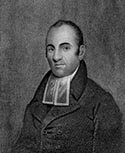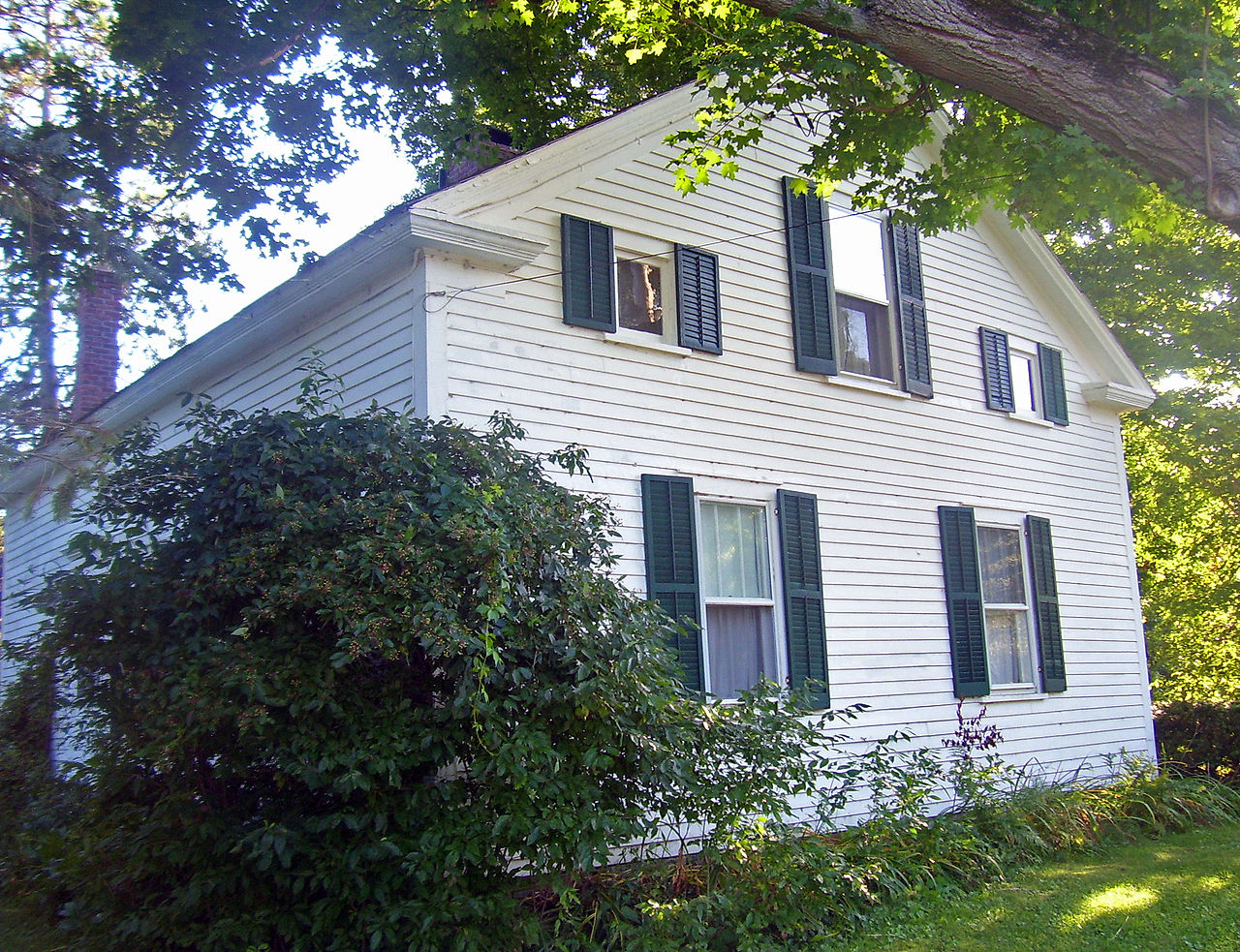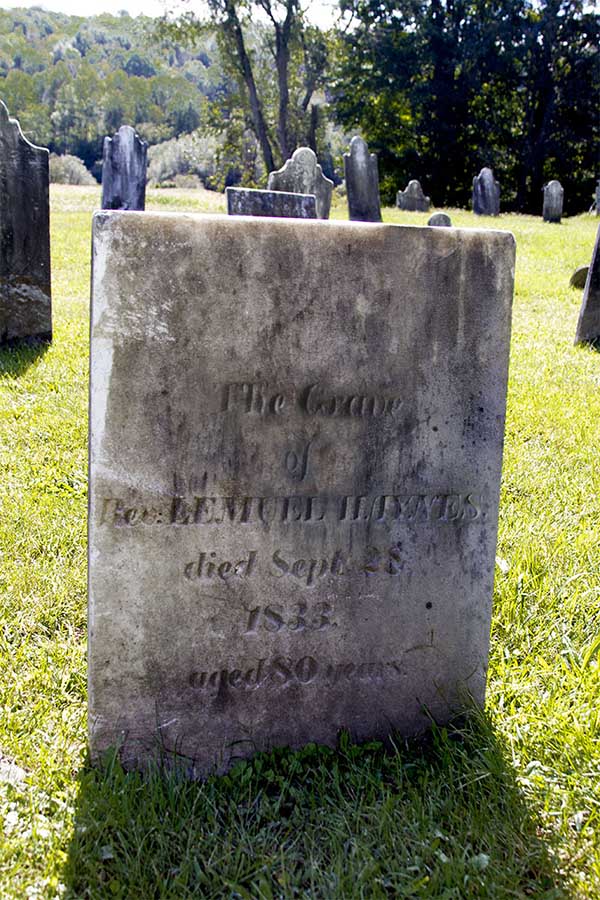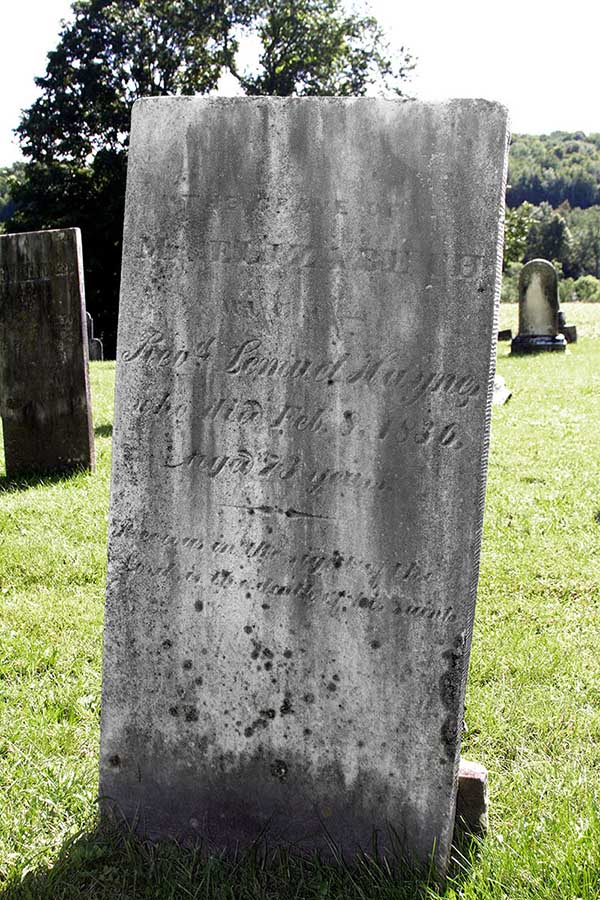Lemuel Haynes
South Granville, New York
The following text is from the National Register of Historic Places Inventory - Nomination Form for the Lemuel Haynes House in South Rutland, New York

Lemuel Haynes was born in 1753 at West Hartford, Connecticut. His father was of unmingled African extraction, his mother a white woman of respectable ancestry in New England. Lemuel Haynes bore the name of neither parent but that of the host in whose house he was born. At five months old, he was carried to Granville, Massachusetts, and bound out as a servant to Deacon David Rose for twenty-one years. Lemuel Haynes attended a common school in Granville, but got a great deal of his education in the chimney-corner at the Rose home, including his great knowledge of the Bible, the Psalms, and contemporary sermons. During his chimney-corner reading Haynes committed a great deal to memory. This, in later years, caused him to be esteemed as a "walking concordance" of the Scriptures.
Saturday night was a time of religious instruction in Deacon Rose's household. During these evenings young Haynes, fascinated by theology, usually read aloud a sermon by some worthy of the church. On one such evening, following an otherwise usual reading, the deacon inquired whose sermon had been read. Haynes responded, "It's Lemuel's sermon." That evening was a turning point in Haynes' life for it occurred at a time when the local parish lacked a minister. From that time on, Haynes was frequently called upon to conduct services and to read approved sermons, which occasionally were his own. In 1774, Haynes, twenty-one years old and free of his indenture, built a stone house across the road from the Roses and enlisted in the Minutemen. This militia was composed of citizen-farmers who held themselves ready for instant duty. In April 1775, a day after the skirmishing at Lexington and Concord, Haynes enlisted as a private with Captain Lebbeus Ball's militia company and joined the army at the siege of Boston. He later became one of Ethan Allen's Green Mountain Boys. In 1776 he again enlisted as a private to march under the command of Lieutenant General Timothy Robinson in a campaign to reinforce the Northern army.
Following his military experience, Haynes returned to Granville were he resumed farming and, after hours, his study of theology. Increasingly, his neighbors recognized him as a young man having ability in prayer and sermonizing. They encouraged him to devote his full time and energy to preparation for a life in the ministry. In preparation for this life Haynes went to live with the Rev. Daniel Farrand in New Canaan, Connecticut, there to study Latin and homiletics and to pay his keep by farm labor. After a few months with Farrand, Haynes was invited to study Greek with the Rev. William Bradford in Wintonbury (now Bloomfield), Connecticut, where a post as schoolteacher was procured for him. The following November (1780), after examination by several ministers of "high respectability," he was licensed to preach. He was at once invited by the congregation of Middle Granville, to be pastor of their new church on the hill, thus becoming the first black man in America to serve as pastor to a white congregation. Five years later at the age of thirty-two (November 1785), Haynes was officially ordained a minister of the Congregational Church by an Association of Ministers in Litchfield County, Connecticut. Haynes became the first black clergyman to be so consecrated by any religious organization in North America.
Haynes' ordination was in Torrington, Connecticut, where he served for the next two years. Although his sermons soon began to pack the meetinghouse, there were intolerant diehards in the congregation who were less than pleased with having a Negro in their pulpit. The "designed disrespect" of a clique forced him to leave Torrington to seek another pulpit.
After a circuit in the fall of 1787 through the frontier settlements of Vermont as a missionary, Haynes was invited by the West Parish congregation in Rutland to become their pastor. He accepted the invitation and served the congregation with success and considerable distinction for the next thirty years. There, the thirty-five year old minister's fame as a stirring preacher and scholarly theologian became widespread. He acquired a transatlantic reputation as a skillful and ruthless polemicist in theological dispute, a reputation partly attributable to his widely published and internationally distributed 1804 sermon against Universalism. During his pastorate at the West Parish the congregation grew from forty-six to more than 300 and regularly he was invited to preach in outlying villages, many of which he had helped to organize. Also during this period he was awarded an honorary degree of Master of Arts by Middlebury College at its second commencement in 1804. His was the fourth Master' s degree awarded by Middlebury and the first ever bestowed on a black in America. In 1809 he was appointed field secretary of the Vermont Missionary Society. In 1814, as delegate of the General Convention of Ministers in Vermont, he attended the meeting of the General Association of Connecticut.
Haynes' thirty years in the Rutland West Parish covered the formative period of the United States and the State of Vermont. From his days as a Minuteman, Haynes was always an ardent patriot and a Washington man through and through. He was in demand to speak on political occasions and his sermons, through which he defended the gospels according to Jonathan Edwards and George Washington, were often given serious attention by the press.
He talked freely about politics with the insight and the sarcasm he was noted for. His sarcasm, however, in urging his political views and his activity in the conservative Washington Benevolent Society brought him increasing conflict with most of his parishioners. Thus it was during the spring of 1818 the pastoral relation between Lemuel Haynes and his Rutland church came to an end.
For a few months after his dismission from West Rutland, Haynes was in demand as a preacher all over the state. He never failed to be in a pulpit every Sabbath. His roving ministry came to an end when at the age of sixty-five he was invited to supply the church in the cultured and pleasant town of Manchester in southwest Vermont, where he served for the next three years.
In 1822 Lemuel Haynes, sixty-nine years old and revered as Father Haynes, accepted the pastorate in South Granville, New York. In this village he served his final eleven years. Even in his seventies Haynes worked tirelessly. His memoirist, Timothy Mather Cooley, thought that in many ways his last decade at South Granville was his most gratifying. The church grew in numbers, he was much in demand for spiritual counseling and funerals, and he was as esteemed by his neighbors as by his fellow ministers.
On September 28th, 1833, in the third month of his eightieth year, Lemuel Haynes died. His wife Elizabeth died in February, three years later. Both are buried in the South Granville cemetery a mile north of the Haynes home which was historically restored in 1967.
The life and work of Lemuel Haynes should be commemorated. Recognition could be based on his being the first black clergyman to be ordained a minister by any religious organization in America; or on his acceptance by the Congregational Church, the most prominent church in New England at that time, making him the first black minister for a white congregation in America; or on his being the first black in America to receive a Master of Arts degree. However, his impact on the developing New England communities in which he pastored for so many years should also be commemorated. South Granville, New York, is an ideal location for his commemoration. It has the congregation of his last pastorate, his home, and his grave.

The text, above, and Haynes House image by Daniel Case were found on Wikipedia's Lemuel Haynes House Page.
http://en.wikipedia.org/wiki/Lemuel_Haynes_HouseNational Register of Historic Places Inventory - Nomination Form
I took the headstone photos in September 2013

